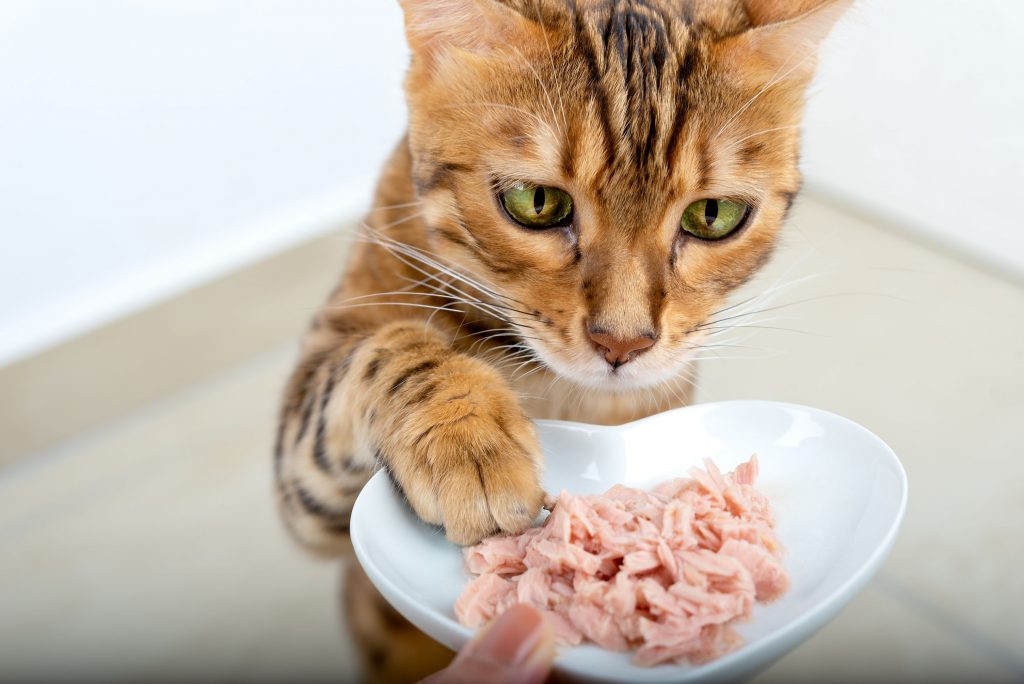
December is a very busy month. In addition to all of the other national holidays, it also rings in National Cat Lovers Month. While true cat lovers don’t need a month to acknowledge and celebrate the value of felines in our lives (we do that all the time!), it is an opportunity to promote the healthiest possible feline lifestyle. To that end, do you know what your cat is eating? Finding just the right cat food may not be the easiest experience, but the best product for your unique cat may be closer than you think.
Feline Dietary Requirements
The evolution of today’s domestic cats began in the ancient Fertile Crescent, a region in the Middle East. From Egypt to Israel, the ancestors of our fluffy best friends survived on small, high protein meals. As obligate carnivores, they didn’t have food sources rich in carbohydrates or fat. They sharpened their hunting skills over millennia and descendants today continue to largely benefit from meat-centric cat food.
A Balancing Act
In addition to boasting high levels of protein and fat, modern cat food should provide felines with a balance of vitamins, minerals, fatty acids, and amino acids. Even if your cat could subsist on meals they caught themselves, doesn’t mean they should.
Responsible cat ownership involves providing the best cat food. Today you can choose between canned or wet food, and kibble or dry food. A combination of both is commonly appealing, and meets all the flavor and texture profiles they crave. Plus, with wet or canned food, you’re increasing how much water they take in every day.
When Cats Have Picky Palates
If your cat doesn’t seem to like their food, try to move it to a different location. They could be easily disturbed by household noise or traffic. If they continue to snub their food, it could be worthwhile to investigate. Inappetence can signal various medical conditions. Once these are ruled out with examination and diagnostics, we can try to figure out their taste preferences.
It may be a valuable endeavor to slowly introduce a small variety of options for them to taste and try at any given meal. Of course, just because your cat demolished a certain type of food one day doesn’t necessarily mean they want it at every meal. Taking the time to understand what your cat likes (and, perhaps more importantly, dislikes) can help you provide the best cat food for their special preferences.
Feeding Raw and Grain-Free Diets
The raw-food trend has continued to gain traction in the last several years. Because it attempts to mimic their lifestyles in the wild, the raw food diet can be tempting to try. However, because of the risk of infection with salmonella, toxoplasmosis, e.coli, and listeria, we do not recommend it. Furthermore, while a raw meat diet meets the feline need for protein, it doesn’t account for the essential vitamins and minerals needed for health.
Grain-free cat food can be a wonderful alternative to foods high in carbohydrates, but should only be given to cats under veterinary supervision. The bottom line is that we want to ensure your cat receives a truly balanced meal (or two) every day.
Ideally, cat food should be provided twice a day, morning and evening (not more than 12 hours apart). You can divide their portions into 3 or more small meals throughout the day, but this schedule is only truly successful if you’re home all day.
Cat Food For the Win
If you need help finding the right cat food for your best kitty friend, please call us at (818) 614-9929. We are always happy to help at Shiloh Veterinary Hospital.
